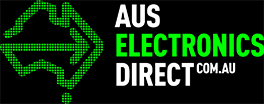How to Choose the right Power Adapter for your Device
Author: Aus Electronics Direct Date Posted:1 August 2019
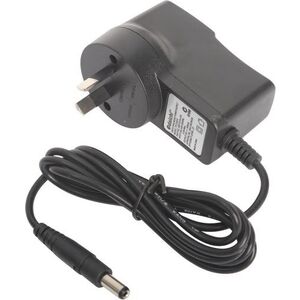
How to choose the right AC to DC Power Adapter for your device.
Do you have a working electronic device with a missing, failed or damaged power adapter or power supply?
In this article, we will tackle how you are able to identify a suitable replacement AC to DC Power Adapter or Power Supply for your electronic device.
What is an AC to DC Power Adapter?
Basically, its a power supply which converts 240V AC Mains Power into a lower usually DC voltage that your electronic device needs to operate.
What to look for?
The easiest way to replace a power adapter is by looking at the original power adapter supplied with your device. The power adapter will have a rating label usually on the underside or top of the power adapter. Below is a sample image of the rating label.
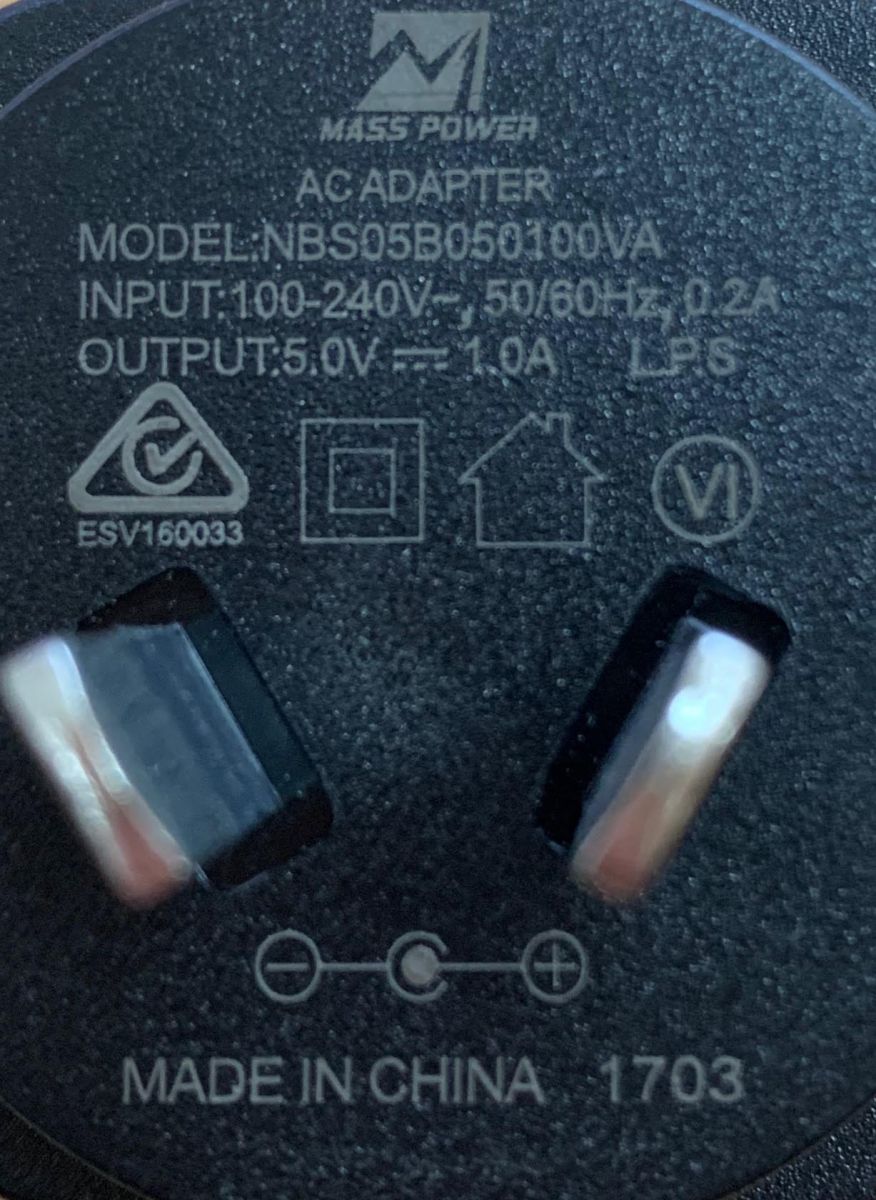
However, this may not be case where the original power adapter is at hand to be able to view the rating label. In this guide, we will run you through what you need to look for to successfully replace your devices power adapter.
Using the above rating label as an example, lets tackle the markings and explain what they mean and highlight what you need to note and look for.
- Model # - This model number refers to the original manufacturers part number. Unless you are communicating with the Original Equipment Manufacturer, this would have no relevance to power adapter suppliers and sellers.
- INPUT Specifications – This shows the voltage range, frequency and current consumption of the power adapter. Australian Appliances including Power Adapters requires 240V AC. If the Power Adapter is sourced in Australia, this will meet the requirements. However, if they are being sources
- OUTPUT Specifications – This is the most important information we require. Using the same rating label, the output states the output voltage, whether the output is AC or DC and the Maximum Current output. This particular Power Adapter indicates it has an output of 5V DC with 1A supply.
In essence, what we need to identify either through the power adapter rating label; looking for markings on the actual electronic device or instruction manual booklets are the following:
- Input Voltage
- Type of Voltage output = AC or DC
- Current requirements = measured in Amps (A)
- Size of DC Connector
- Polarity of Connections
The general rule of thumb is to match the Voltage (V) and equal or beat the current (A) requirements.
Checking the Voltage (V) Output
AC or DC – We need to identify whether the voltage output require is AC od DC. Some power adapters indicate this with AC or DC immediately following the voltage output, however in most instance, they are signified by the below symbols.
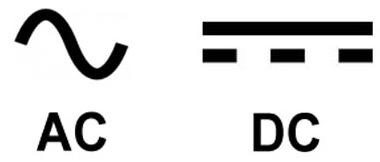
AC is signified as a sinewave whist DC is signified with a straight line with 3 broken lines underneath.
Checking the Current (A) Output
Once you have confirmed the voltage of the device, we need to find the amount of current that it uses. Current tells us how much power the device needs to operate.
Amps: The number of Amps is usually stated right after the Voltage and is shown in A or mA. Please note that 1A is equivalent to 1,000mA. To select the appropriate power adapter, simply match or exceed the current (A) rating. Do not worry if the current rating is higher as all our power adapters are switch mode power supplies which provide regulated output. This means that your device will simply draw what it requires.
Amps and volts what about Watts?
Voltage carries the power and the Amps are the measurement of how much power it consumes, think of it like a river, the V is how wide the river is and the A is how fast the water is flowing, so a low volt high amp circuit is a small river flowing fast.
If we look at the river, we could calculate how much water is flowing into the river per hour. This would be the Watts. There is a direct relationship between these three variables.
A 12V 2A adapter (12m river flowing at 2m per hour) would have the watts of 12 X 2 = 24W.
The basic equations are here
W = V X A
A = W/V
V = W/A
Reading the polarity of the connector
Once you have the V and A down then comes the tricky part, most appliances will have a circular connector with the inside hole carrying one pole and the outside carrying the other.
The most common is centre positive (+) connectors.

There is also the less popular centre negative (-) connector.

The adapter and the device must match so always double check the symbol on the AC adapter and the device show the same polarity.

A centre negative connector.
Choosing the right DC plug
Hopefully, you have the size of the devices plug and can just check the adapters measurements, there are two measurements for these types of connectors.
- OD – Outer diameter of the plug.
- ID – Inner diameter of the plug.
The most common type of DC connectors used is the 2.1mm DC connector. This has a 2.1mm centre pin and has an outside diameter of 5.5mm.
Most of our single voltage power adapters adapt this 2.1mm DC plug. However, we do offer universal power adapter with interchangeable DC Plugs.
Below are different types of DC plugs with inside pin and outside diameter measurements for your reference.
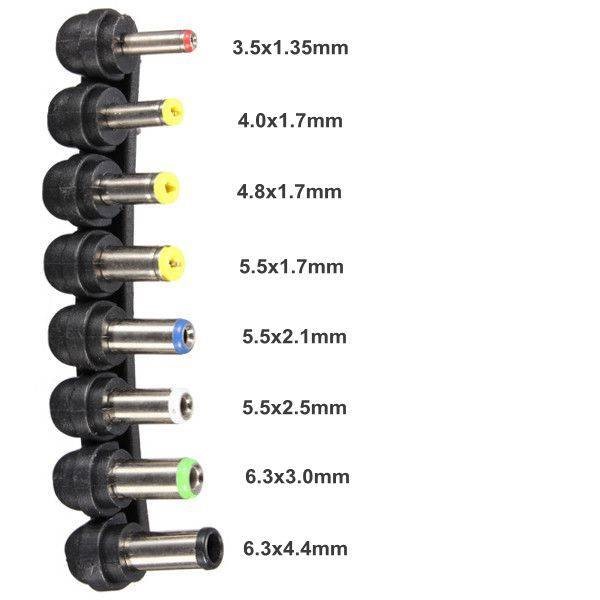
If you are measuring, you need the diameter of the centre pin for the (ID) and the inner diameter of the port (OD).
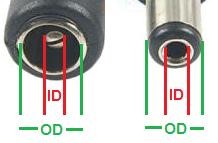
ID an OD measurements for both the female and male connector must match to connect properly.
If you are not sure on the pin type or are looking to use it for a few devices, we recommend looking at a universal adapter. A universal power adapter is supplied with multiple interchangeable DC plugs. These allows you to be able to output at different voltages, with different plugs, configured in different polarities.
As USB slowly takes over, the charging system is becoming universal, USB is now becoming available in lower power devices and as chargers become more powerful there will likely be bigger and powerful devices running natively on USB. Until then remember to be safe with all electronics and double check everything, as incorrect voltage or polarity can damage your device.
Comments (8)
diagram
By: russ on 24 May 2025normally the outer is on left and the inner is on the right ?? the diagram is correct but it is backwards
Wattage
By: Lee on 24 April 2025My device states it needs an adapter which outputs 6v but at 4w. Which 6v adapter do I need for 4w when most 6v adapters state amps and not watts. Thanks
All the information I need
By: Laura on 2 March 2025Thank you. This is exactly what I needed to know, explained clearly.
Further Question
By: Ethel on 3 May 2024Hi, Just wondering what happens if the voltage is different between adaptor and item to be charged? Like you say for amps to match or exceed, but is that the same for volts/watts? Thanks
Awesome
By: Yvette O'Connor on 24 December 2022This is fantastic. Clearly written, wven for us non- techies/electrical types. Has helped soooo much. Thank you.
